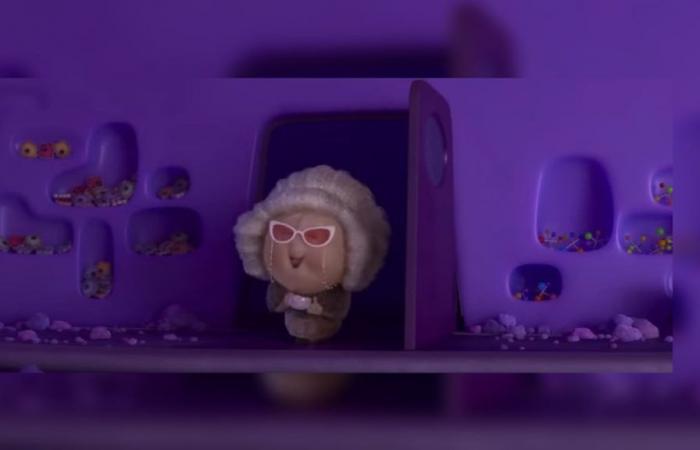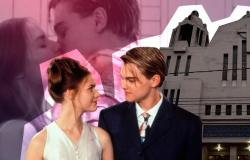At the beginning of this month the latest trailer for Inside Out 2 (Reverse in Spain and Intensely 2 in Latin America), and in it a peculiar character appeared who personified a concept that was very present on a cultural level, but still quite unknown on a psychological, purely emotional level. We talk about Nostalgia.
The reality has turned out to be somewhat more modest; Nostalgia appears briefly in two scenes of the film and, despite the scientific advice that has been available, characterized in a way that does not fully reflect the reality of the emotion according to the latest psychological studies.

The complex emotions in Inside Out 2
The plot that develops Inside Out 2 It has to do with the appearance of complex or “sophisticated” emotions in the emotional system of the protagonist, Riley, who has just turned 13 years old.
Anxiety, Shame, Envy and Ennui (boredom) abruptly appear in the control room to end up taking control of the teenager’s emotional life. Led by Anxiety, they send basic emotions to ostracism. They then have to fight to return to the control room, end Ansiedad’s tyranny and thus reestablish a certain stability and sense of identity.
But what are complex emotions? Well, we can define them as a subtype of emotions characterized by greater cognitive involvement, which makes them less immediate and more subject to cultural and individual factors. They are not essential for survival, like basic emotions, but they are fundamental in our social performance, in interaction with others and in the formation of our identity.
It is true that in adolescence emotions tend to intensify and that in puberty a process of psychological and identity transition occurs that gives greater prominence to complex emotions, but the film can lead us to think that these do not play any role until then. . Contrary to this idea, it is enough to see in our daily lives very young children behaving with jealousy or envy, or with remorse for having acted badly. Thus, although it can be said that complex emotions are born later than basic ones, they are already present at ages as early as four years old.
Furthermore, they do not appear abruptly in our emotional system, as the feature film may imply, but rather they coexist and require basic emotions. Our body does not have independent mechanisms for the different emotional categories, but the complex ones are expressed through the same channel prepared for basic emotions.
Nostalgia dresses in an old way
Among the complex emotions is nostalgia, which in the film is represented as a kind, adorable old woman. This image undoubtedly coincides with the review that has been made of nostalgia from psychology, placing it as an eminently positive emotion, despite the melancholic notes that we can experience.
However, by presenting her as old, languishing and dim, with an outdated hairstyle and a dull color, the creatives of Inside Out 2 They continue to fall into the classic association of the nostalgic with the old, with the retrograde, as an emotion tending toward the lethargic and immobilizing, contrary to what recent psychological studies show.
Nostalgia wears a knitted shawl over a floral dress and slippers. But what draws the most attention are the white-framed glasses with pink lenses: is this an allusion to the fact that with nostalgia we tend to see everything “pink”? In that case it would be an excessive simplification. Like any complex emotion, nostalgia is guided by a constant flow of beliefs. Although at times it may seem that it tends to sweeten the past, the truth is that on many occasions we end up relativizing this thought, falling into a much more critical type of nostalgia.
Adolescence creates memories but does not long for them
But it’s not just his appearance. In the few seconds that Nostalgia is on screen, it interacts with the rest of the emotions. His “what times those were” to refer to something that just happened can only be read from comedy and irony, since we know that the memories involved in nostalgia usually refer to moments passed years ago, when we felt that thing as something desirable and at the same time irrecoverable time.
More interesting is what the other emotions tell Nostalgia: to return in 10 years, when Riley has experienced a couple of graduations and a friend’s wedding. Here the scriptwriters of the series point in the right direction, because, although adolescence is a common content of nostalgic memories, the evidence shows that it begins to be important around the ages of 18-20 and that we become more nostalgic as we age. we are getting older.
Likewise, although any stimulus and memory can trigger our nostalgia, the truth is that big events, such as graduations or weddings of loved ones, are more likely to produce emotion.
Nostalgia to cope with Anxiety
And this is precisely the reality that several studies draw, both on a psychological and cultural level. Nostalgia can be understood as a natural response to the anxiety that an accelerated present full of changes produces in us, a kind of defense mechanism with which we revalue previous vital stages to continue looking to the future with a greater sense of control. Maybe with Nostalgia everything would have been much easier inside Riley’s mind.
By: Javier Leñador González-Páez
Research staff in training at the Department of Sculpture and History of the Plastic Arts, University of Seville







